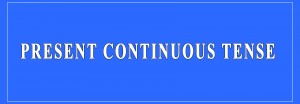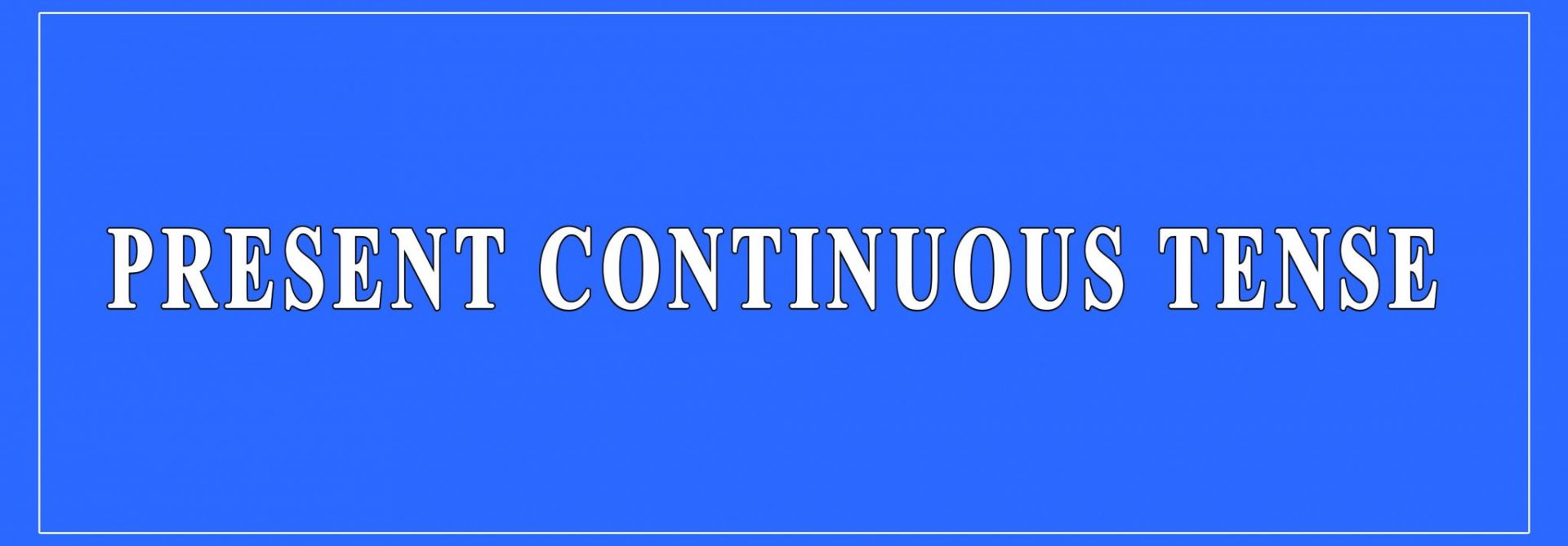Present continuous tense is used to express a continued or ongoing action at present time or it expresses an action which is in progress at the time of speaking in the present.

Structure Of Sentence
Positive: (Subject + is/ are/ am + 1st form of verb + ing + Object)
- I am typing a letter.
Negative: (Subject + is/ are/ am + not + 1st from of verb + ing + Object)
- I am not typing a letter.
Interrogative: (Is/ are/ am + Subject + 1st from of verb + ing + Object + ?)
- Am I typing a letter?
- They are not watching television.
- What are you doing?
- Why aren’t you doing your homework?
Spelling -Ing Forms
1. If a verb ends in a stressed vowel + one or more consonants +e or ue, “drop” the e and add-ing.
- Believe => believing
- Joke => Joking
- Taste => tasting
2. If a verb ends in -ie, change the –ie to -y and add ing.
- Die => dying
- Lie => lying
- Tie => tying
3. If a verb ends in y, add -ing. It doesn’t matter if there is a vowel or a consonant before y.
- Pray => praying
- Spy => spying
- Play => playing
4. If a verb ends in vowel + one consonant double the consonant and add -ing.
- Beg => begging
- Chat => chatting
- Fit => fitting
5. If a word ends in a stressed vowel + r, double the r and add –ing, but if a verb ends in an unstressed vowel + r, do not double, the r, just add -ing.
- Confer => conferring
- Defer => deferring
- Answer => answering
- Offer => offering
6. If a verb ends in a vowel, add -ing.
- Do => doing
- Go => going
7. Add -ing to all other verbs.
More uses of present continuous tense
Longer Actions in Progress Now
In English, “now” can mean: this second, today, this month, this year, this century, and so on. Sometimes, we use the Present Continuous Tense to say that we are in the process of doing a longer action which is in progress; however, we might not be doing it at this exact second.
- I am studying to become a doctor.
- I am not studying to become a dentist.
- Aren’t you teaching at the university now?
Near Future
Sometimes, speakers use the Present Continuous Tense to indicate that something will or will not happen in the near future.
- I am meeting some friends after work.
- I am not going to the party tonight.
Repetition and Irritation with “Always”
The Present Continuous with words such as “always” or “constantly” expresses the idea that something irritating or shocking often happens. Notice that the meaning is like Simple Present, but with negative emotion. Remember to put the words “always” or “constantly” between “be” and “verb+ing.”
- She is always coming to class late.
- He is constantly talking. I wish he would shut up.
REMEMBER Non-Continuous Verbs/ Mixed Verbs
It is important to remember that Non-Continuous Verbs cannot be used in any continuous tenses. Also, certain non-continuous meanings for Mixed Verbs cannot be used in continuous tenses. Instead of using Present Continuous with these verbs, you must use Simple Present.
- She is loving this chocolate ice cream. Not Correct
- She loves this chocolate ice cream. Correct

